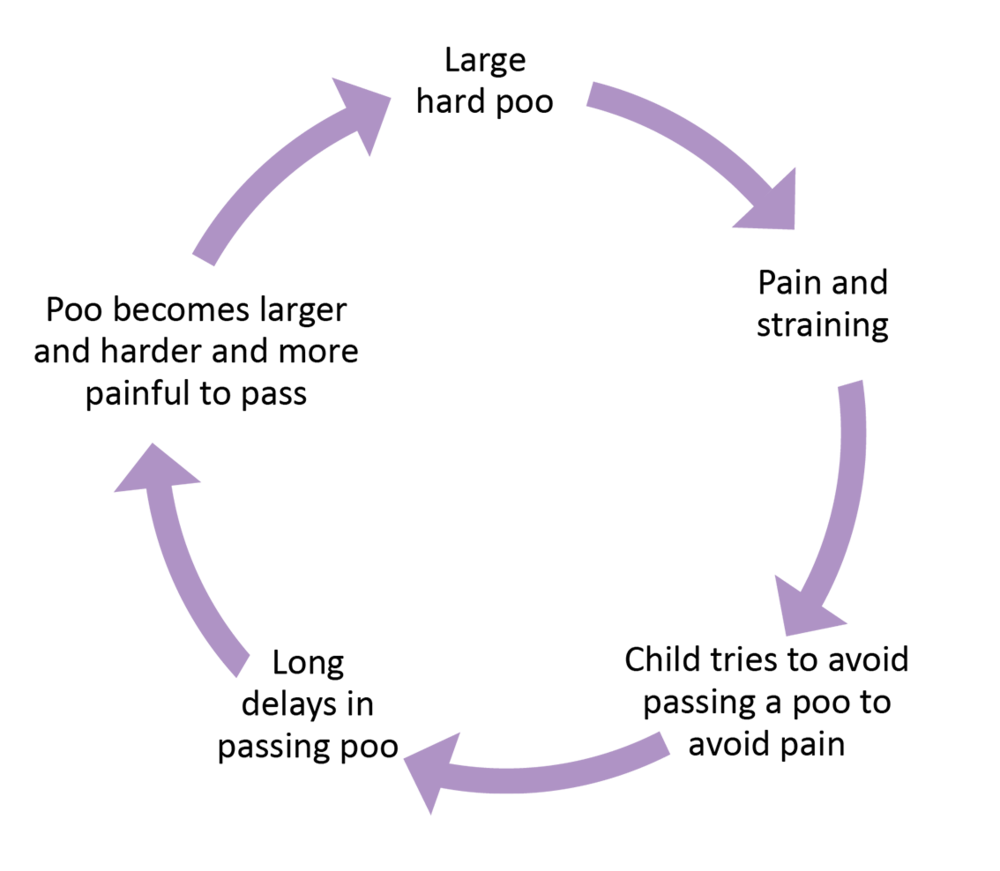
- Home
- Managing Constipation In Children
Managing Constipation In Children
Most children will occasionally experience constipation. Many will have a tendency for recurring mild constipation. This can usually be managed with healthy eating, regular exercise and toilet use, and occasional use of a laxative if required. If your child is experiencing excessive straining and discomfort or pain see your healthcare professional.
Signs that your child may be constipated:
✓ Poos are hard, dry and look like nuts
✓ Pains in the belly or bottom
✓ Pain when passing a poo
✓ Leaks small watery poos into the underwear (soiling), if he or she is already toilet trained
✓ Avoiding going to toilet or hiding and making unusual movements such as rocking backwards and forwards while stiffening their bottom and legs, or they may squat or get into an unusual position. These movements may look like your child is trying to have a poo, but it is often the opposite and they may be trying to avoid doing a poo for fear that it is going to hurt
✓ Another way to see if your child is constipated is to look at their poos and compare them to The Bristol Stool Form Chart
✓ Poos that look like small, hard nuts or like a lumpy sausage (types 1 or 2) are signs that your child is constipated
Why does constipation develop?
Constipation can occur at any time, after a change in diet or a change in the child’s environment. For some children, it occurs because they ignore the urge to have a poo because they are too busy playing. If this happens often, the brain starts ignoring these urges and soon your child may not be aware that there is a poo to pass. This then leads to a gradual build-up of poo that becomes dry, hard and difficult to pass. Some children will hold back (also called ‘withholding’) from passing a poo as they have previously felt pain when doing so. This can form a nasty cycle, as when the child eventually passes the poo it is larger, dry and causes more pain, which causes more fear of passing a poo and the nasty cycle continues.

Times When Your Child Is More Likely To Develop Constipation
There are three stages of the child’s development when constipation is more likely to develop: when they first start eating solids (cereals and puréed foods), during toilet training and after starting school.
Toilet training
If your child develops constipation during toilet training, it could be that they are not ready or interested yet in using the toilet. If they have also experienced pain when passing a poo, they may start withholding (avoiding passing a poo) to avoid more pain. Here you may want to temporarily stop toilet training while you treat the constipation. You should discuss this with your healthcare professional.
Starting school
Some children do not want to use the bathroom at school as it is unfamiliar or is ‘too public’ and this can lead to withholding. Often your child will not raise this problem with you, but they may become constipated and soil their pants. If your child has constipation for an extended period of time, the muscles in the bottom (rectum) can become stretched and your child may lose the ability to feel the urge to go and pass a poo. Soiling is due to overflow diarrhoea, where small amounts of poo squeeze past the large hard poos and leak out of the anus. If your child develops constipation or starts soiling themselves around this time in their life, treat the constipation, monitor how often they pass a poo at home and ask about what happens at school. Then if you think there is an issue at school, raise it to see how it can be addressed.
You can also try eating breakfast earlier to give your child time to pass a poo before they leave
for school.
Treating Your Child’s Constipation With OsmoLax Relief
Osmolax Relief can be used in children 4 years and above. OsmoLax Relief works to help relieve constipation by helping to restore the body’s natural rhythm. It does this by increasing the amount of water held in the bowel to soften hard poos, make them easier to pass and helps them get passed more regularly.
As OsmoLax Relief is virtually taste free, with no flavour or salt or sugar, it can be mixed with your child’s favourite drink (hot or cold). This makes it easier for them to drink it than some other laxatives.
How Long Does It Take To Work?
Because of its hydrating action, it is likely to take 1 to 3 days before your child starts passing softer poos. After this, you can expect your child to have more regular, softer poos.
How Do You Give OsmoLax Relief?
Add OsmoLax Relief powder to any drink that your child likes (warm or cold), such as water, cordial or juice. Simply add the recommended amount of powder based on your child’s age and stir until it dissolves and then your child drinks the OsmoLax Relief. If needed, you can store the prepared OsmoLax Relief in the fridge for up to 6 hours.
How Long Does My Child Take OsmoLax Relief For?
Osmolax Relief generally produces results in 1 to 3 days and can be taken until the body’s natural rhythm is restored. If symptoms persist see your healthcare professional.
For dosage instructions and directions for use, please follow the instructions on pack, or click here.
What Else Can You Do To Help Your Child?
Keep a poo diary
Keeping a record of your child’s poos can help your doctor or nurse better understand and treat your child’s constipation. You can view and download The Children’s Poo Diary
Regular toilet sitting
It is important that children with constipation develop the habit of regularly sitting on the toilet. The best time to go to the toilet is after eating a meal, as the act of eating will start movement within the whole gastrointestinal tract.
Encourage your child to sit on the toilet (for 3 to 5 minutes) within half an hour of eating breakfast and/or dinner.
Provide a footstool that your child can place their feet on to feel stable and secure while sitting on the toilet.
You may want to give them a book or cartoon to read, to help pass the time. Use a timer to avoid arguments about sitting times.
Rewards can be helpful for your child to encourage sitting on the toilet (he or she does not have to pass a poo to receive a reward). For pre-schoolers, try stickers or a song as a reward. For older children, it may be doing an activity book or computer time.
Healthy diet
Increasing fluids and gradually increasing fibre in your child’s diet can help prevent constipation in some cases. However, for a child with repeated constipation, drinking extra fluids and eating a high-fibre diet are often not enough to treat constipation, and a laxative may be needed such as Osmolax Relief.1
For more information on the OsmoLax Relief range and the Children’s Pack, click here.
For further information, visit our FAQ page.
To view or download the Bristol Stool Chart or the Children’s Poo Diary, cick here.
1. Savino F et al: Efficacy and tolerability of PEG -only laxative on faecal impaction and chronic constipation in children. A controlled double blind randomised study vs a standard PEG-electrolyte laxative. BMC Paediatrics 2012. 12:178 doi:10.1186/1471-2431-12-178

